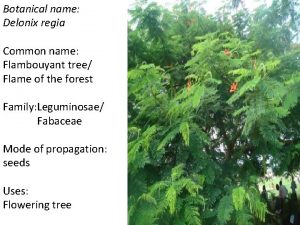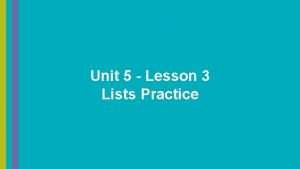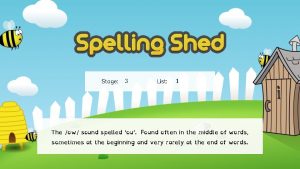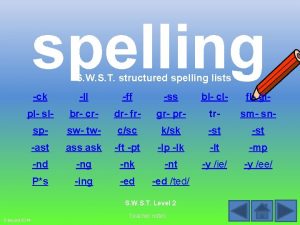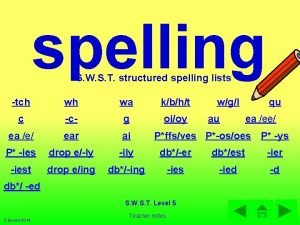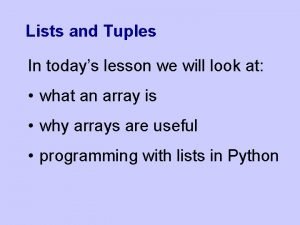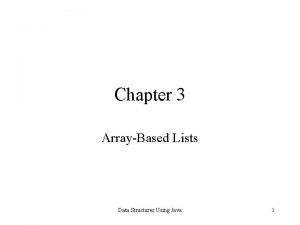List Search Alice Common Uses of Lists Iterating















- Slides: 15

List Search Alice

Common Uses of Lists Iterating through a list of several like items to accomplish the same task with each item. As in the previous Rockettes example Iterating through a list of several like items to search for one item that has a given property. This session demonstrates a list search.

Example A Wac. AMole arcade game. Little moles pop up from holes in the top of the booth. The user tries to whack the mole before it drops out of sight. The game is over when 10 moles are whacked.

Designing the game To design the game animation, we need to answer several questions: How will the game work, overall? How do we keep score? How do we know when the user whacks a mole? How will a list help us?

How will the game work, overall? A mole pops up and then goes back down. Each time the mole pops up, the user attempts to use the mouse to click the mole. When a click occurs, we check to see if a mole was clicked. If so, a sound plays and the score increases. The above actions repeat until the game is over.

Overall design Is the game over? yes congratulate no pop random mole Mouse click event Did mouse click on a mole? no yes Play sound Change score display do nothing

Storyboard for overall game This is the main driver for the game. The code will be written in World. my first method While the game isn't over randomly select one mole and call pop. Mole Congratulate the user

Storyboard: pop. Mole Do in order Move the mole up Wait some time Move the mole back down

How do we keep score? We will use a visual scorekeeper. The scorekeeper is made up of two cylinders A gray cylinder above the ground A yellow cylinder below the ground. Each cylinder is 1 meter in height.

How do we keep score? Each time the user successfully clicks a mole, the yellow cylinder will move up 1/10 meter. When the yellow cylinder is above ground (has moved up 10 times), the game is over.

How do we know when the user has clicked on a mole? This is where a list comes in handy: create a list of the moles (one mole is below each hole) create a mouse click event each time the mouse is clicked, call a score method to iterate through the list of moles to see whether one of the moles has been clicked!

Storyboard: keep score Event: User clicks mouse Response: score For All in order If any mole in the mole list was the object clicked Make a noise Move the playerscore (yellow cylinder) up 1/10 meter

Demo Ch 09 Lec 2 Wac. AMole Concepts illustrated in this example A item can be randomly selected from a list In this example, a random mole was popped up from a list of moles. A visual scorekeeper gives the player feedback on the progress of a game.

Assignment Read Chapter 9 Section 2, List Search Read Tips & Techniques 9, Poses

Lab Chapter 9 Lecture 2 Lab
 What is iteration in mathematics
What is iteration in mathematics Best first search is a type of informed search which uses
Best first search is a type of informed search which uses Python plot list of lists
Python plot list of lists Prolog
Prolog Who discovered sulfur
Who discovered sulfur Name of the plant
Name of the plant Adversarial search problems uses
Adversarial search problems uses Semicolon vs colon
Semicolon vs colon Lesson 3: lists practice
Lesson 3: lists practice Sound waves spelling word lists
Sound waves spelling word lists Swst spelling test
Swst spelling test Singular plural
Singular plural Edinburgh resource lists
Edinburgh resource lists Lists of tuples python
Lists of tuples python Lisp lists
Lisp lists Java types of lists
Java types of lists





